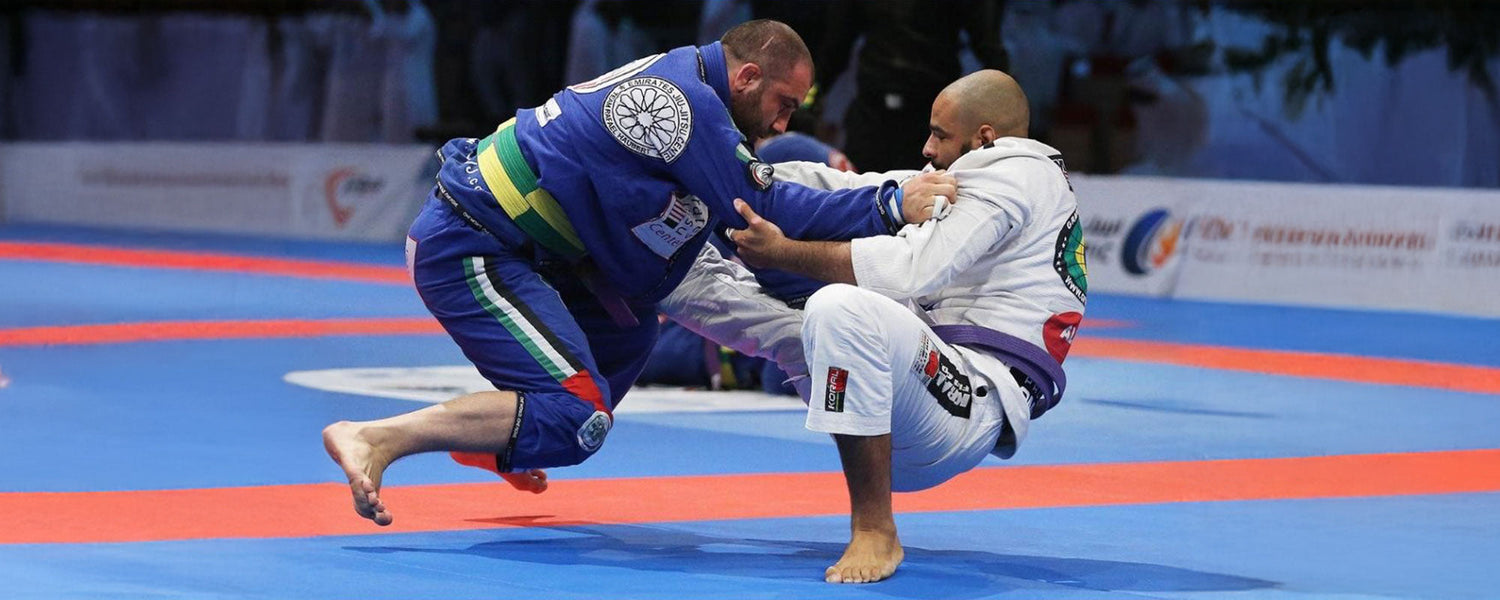Table of content
Brazilian Jiu-Jitsu literally translates to “The Gentle Art”. In most cases, you can find it gentler than its other counterparts including Wrestling and Judo, or striking martial arts like Boxing. But, BJJ is not exactly free of injury risks.
If you have been training BJJ for a long period of time, you must have picked up some of these.
Though these injuries depend on the intensity of training you do, five of the most common BJJ injuries that most people face have been listed below. Learning and understanding how they occur can help you avoid them and be safe during your training.
1. Possible BJJ Injuries
1.1. Back Pain
Back pain is one of the most common injuries that you may come across during BJJ training. BJJ has an aggressive side to it that demands plenty of effort. In BJJ, back pain takes place when a guard player gets stacked and his opponent puts all of his weight on them.
This majorly hurts the lower back that is compressed heavily during the movement. Back pain can also occur due to poorly timed takedowns or the application of poor techniques by attackers like lifting with the back instead of hips.
Prevention:
The best way to prevent back pain is by increasing the flexibility of the back. Good stretching and inversion drills are incredible for increasing the back’s flexibility over time. Yoga exercises related to BJJ can also be a great line of action for you to strengthen your back. Conditioning and strength can also help in improving your back’s stability along with preventing any possible damage.
1.2. Torn Ligaments
Strains or tears in a ligament can take place when a joint overstretches or twists beyond its limits. In BJJ, this is one of the commonly found injuries that every second or third trainer faces.
Most of the time they happen while performing rotational submissions or incorrect techniques. Though they mostly occur in the wrestling discipline, you cannot overrule the possibility of it happening in BJJ.
The Heel Hook is one of the most notorious submissions that lead to a torn ligament. This submission causes rotational damage to your ankle and knee. It means that your knee and the joints have to bear significant stress that can result in a tear, stretching, or snapping of the ligament.
Prevention:
According to BJJ experts, the best way to prevent your ligaments from getting damaged is to prepare them before the occurrence of any problem. It means conditioning and strengthening them with BJJ drills that professional athletes perform. In this regard, deadlifts and squats can help in building them strong. With time, your muscles will strengthen and amass around your tendons.
These routines are also beneficial for rehabilitation purposes. The other way of avoiding torn ligaments is tapping early and often. In case, you are caught tight in a heel hook, just save your limbs and ego and tap.
1.3. Cauliflower Ears
If you find someone with ears beaten like hamburger meat, then most likely you are meeting a person who is training BJJ or some other sort of grappling sport. Cauliflower ears are one of the easiest physical traits that are clear signs that a person trains BJJ/grappling or not.
Cauliflower ears are commonly found injuries that, as the name shows, damage the ears due to intense contact. This can occur from clinches, accidental hits, and choke attempts. Actually, this happens when your ear hits or gets scraped along with the separation of skin and cartilage. The blood fills the empty spaces and your ears look like a balloon.
Prevention:
Prevention or cure of this injury is possible in two ways.
The first one is using syringes for blood draining and icing the ear for almost 10 minutes after getting the injury to reduce the swelling.
The other way is plastic surgery. However, you can minimize the chances of getting this injury by looking to stop your opponent from putting too much head pressure. The usage of ear protection tools can also help in avoiding getting cauliflower ear.
1.4. Hyperextension
Hyperextension is perhaps the most common injury in this sport. Hyperextension refers to excessive movement of a joint beyond its normal limits. This type of injury takes place at the time of submission.
This mainly attacks synovial joints such as the armbar and kneebars. In such submissions, these joints are straightened and extended past their locked-out phase that causes discomfort and pain.
In severe cases, the ligaments that provide the stability to joints can get damaged. The most common symptoms of this injury are pain while touching the respective joint, pain while moving the joint, swelling, or some noticeable bruising of tissues.
Prevention:
The best way is to stop your joint from extending beyond the range of motion to avoid hyperextensions. The other way is tapping before reaching the hyperextension point.
In submissions like armbar and kneebars, the pain of hyperextension is quite obvious. It means that you have enough time to tap before getting any permanent damage. You can train for flexibility and stretching but that doesn’t mean your muscles and bones will develop elasticity.
1.5. Broken Bones
In BJJ, we see this as very rare but it happens. This mainly happens due to heavy impact or once again, submissions that have gone wrong or untapped.
It is seen that a lot of times people do not tap just to retain their sense of ego and ultimately end up getting their limbs/bones broken. A lot of videos are available on the internet that points out this reason for broken bones in the BJJ.
Prevention:
When you feel something like a hyperextension of ligaments, bones, or any muscle tearing, the best prevention is tapping before it gets too painful to endure. Tap as soon as you realize the submission has been successfully applied just to be safe.
Failing is a real win in this regard because that one moment of foolishness can cost you years of recovery if not compromise your prospects of doing something athletic ever again. Saving yourself to fight another day and learning from your mistakes can help in multiple ways.
2. Takeaway
While everyone who goes in for the sport is okay with the concept of getting hurt, it doesn’t mean that martial arts like BJJ need to be dangerous. Injuries are preventable Learning and understanding these 5 of the most common BJJ injuries can help you in being alert of them and taking the right preventive measures.
Photo Credit: medium











Leave a comment
This site is protected by hCaptcha and the hCaptcha Privacy Policy and Terms of Service apply.